
Southwest Reptiles and Amphibians
Click on a picture for a larger view

Plains Spadefoot - Spea bombifrons
(Cope, 1863)
 |
 |
 |
| Adult, Cochise County, Arizona | ||
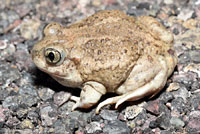 |
 |
 |
| Adult, Cochise County, Arizona |
Adult, Hidalgo County, Texas | |
| Tadpoles and recently-metamorphosed terrestrial juveniles | ||
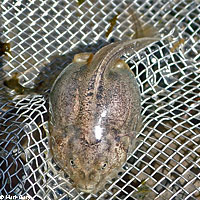 |
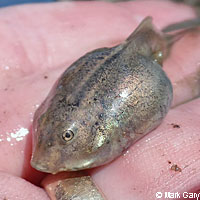 |
 |
| Spea bombifrons tadpoles, Billings County, North Dakota © Mark Gary | ||
| The spadefoot tadpoles and metamorphs shown below were photographed at several locations in Cochise County, Arizona, where Spea multiplicata and Spea bombifrons both occur. These spadefoots could be either species. I cannot positively identify them at such a young age and small size, other than saying that most likely they are not Scaphiopus couchii, so I will just say that these pictures probably include individuals of both species of Spea. |
||
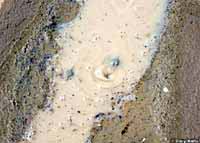 |
 |
 |
 |
 |
 |
 |
 |
 |
 |
 |
 |
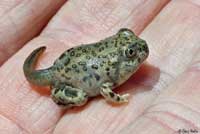 |
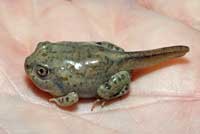 |
 |
 |
 |
 |
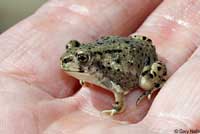 |
 |
 |
| Habitat | ||
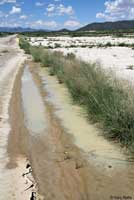 |
 |
 |
| Breeding pool, Cochise County, Arizona, shown on two consecutive days - evaporation happens quickly when there is no rain. | Shallow breeding pool in August (full of tadpoles) Cochise County, Arizona. (Same location as shown to the left, 5 years earlier.) | |
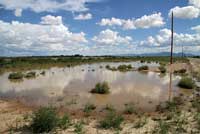 |
 |
 |
| Breeding habitat, Cochise County, Arizona | Breeding pool, Hidalgo County, New Mexico |
The same breeding pool location seen to the left in Hidalgo County, New Mexico, 2 months later. |
 |
||
| Breeding habitat, Hidalgo County, New Mexico |
||
| Short Videos | ||
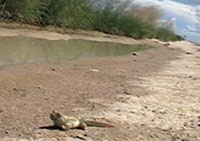 |
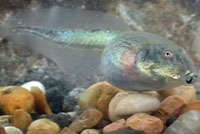 |
 |
| Spadefoot tadpoles (either Spea bombifrons or Spea multiplicata) in a rain pool in Cochise County, Arizona metamorphose into tiny tailed spadefoots and move onto land as the pool quickly drys up. (Shown over a period of about one week.) | Spadefoot tadpoles swim around in a small aquarium. Cochise County, Arizona. These were tentatively identified as Spea bombifrons, but there is a chance they could also be Spea multiplicata (stagnalis.) |
A tiny recently-metamorphosed spadefoot (either Spea bombifrons or Spea multiplicata) which has not yet absorbed its tail hops around next to its dessicating breeding pool with a predator attached to its tail (probably a water scavenger beetle larva.) Cochise County, Arizona. |
Southwest Reptiles & Amphibians
Return to the Top
© 2000 -
